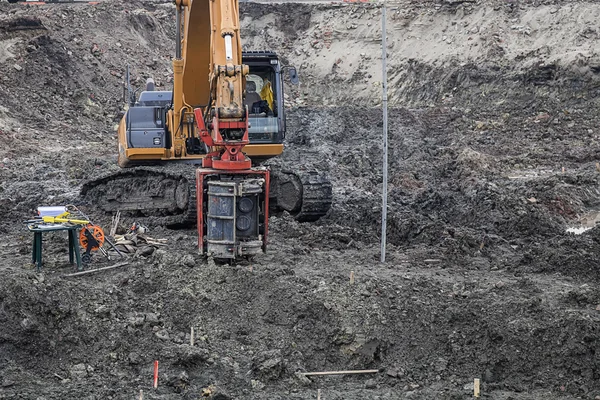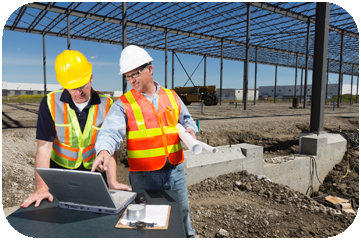Why the Geotechnical Industry Needs Innovative Solutions Currently
Why the Geotechnical Industry Needs Innovative Solutions Currently
Blog Article
The Necessary Payments of Geotechnical Designers in Assessing Soil Actions and Structure Design for Sustainable Facilities Growth
Geotechnical designers serve as a cornerstone in the world of lasting infrastructure development, where their competence in assessing soil habits straight affects the safety and security and long life of structures. By employing advanced techniques such as Basic Infiltration Examinations and Cone Penetration Screening, they carefully assess soil homes, leading to informed choices on foundation layout.
Function of Geotechnical Designers

Along with site investigations, geotechnical designers examine prospective threats such as dirt liquefaction, slope security, and groundwater issues. They use sophisticated engineering concepts to establish solutions that minimize these risks, ensuring that styles follow appropriate codes and criteria. Their work frequently involves cooperation with other design self-controls, architects, and environmental researchers to develop integrated approaches to framework development.
Moreover, geotechnical engineers add to lasting techniques by promoting using materials and techniques that minimize ecological influence. With their comprehensive understanding of dirt technicians and geology, they play a crucial duty in fostering risk-free, resilient, and sustainable framework that meets the requirements of culture while protecting the atmosphere.
Dirt Habits Analysis Techniques
Comprehending dirt actions is fundamental to informed decision-making in geotechnical design, as it directly influences the style and construction processes. Different analysis techniques are utilized to examine dirt residential or commercial properties, making sure exact forecasts of its efficiency under different loading problems.
One key method is the Basic Penetration Examination (SPT), which gives understandings right into dirt density and consistency with the resistance come across during infiltration. In A Similar Way, Cone Penetration Screening (CPT) supplies a continual profile of soil stratification and in-situ stamina specifications, allowing a much more in-depth understanding of subsurface problems.
Laboratory examinations, such as Atterberg limits, unconfined compressive toughness, and triaxial examinations, are vital for defining soil behavior under regulated problems. These examinations help with the decision of important criteria, including shear leaks in the structure, compressibility, and stamina.

Foundation Design Principles
Foundation design principles are crucial for guaranteeing the stability and longevity of frameworks, as they determine just how tons are sent from the superstructure to the underlying soil. These principles encompass various factors to consider, consisting of load-bearing ability, negotiation, and side security. A thorough understanding of soil mechanics is important for geotechnical engineers to evaluate the interaction between the structure and the dirt.
One trick concept is the suitable selection of foundation type, which might consist of shallow foundations, such as spread grounds, or deep foundations, like caissons or piles, depending on dirt conditions and structural lots - civil consulting engineers. The structure should be designed to minimize differential negotiation, which can cause structural damages

Sustainable Infrastructure Practices
Exactly how can we successfully integrate sustainability into infrastructure practices? Lasting facilities practices start with comprehensive website evaluations, which assess dirt habits, local ecosystems, and source accessibility.
Furthermore, utilizing innovative construction techniques, such as making use of low-impact foundations and recycled products, significantly reduces the carbon impact of facilities tasks. Geotechnical engineers play a pivotal duty in choosing ideal materials that boost toughness and sustainability, such as utilizing geo-synthetics to boost soil stability and minimize disintegration.
Additionally, sustainable framework methods call for continuous surveillance and maintenance to ensure that frameworks remain resistant in time. check it out This consists of carrying out adaptive monitoring strategies to attend to possible environmental modifications. Cooperation amongst stakeholders-- consisting of designers, local neighborhoods, and policymakers-- is vital for integrating sustainability goals into project preparation and implementation. Eventually, these methods not only add to the longevity of structures but additionally promote a healthier atmosphere, lining up framework development with wider sustainability goals.
Study and Applications
Study in geotechnical engineering offer useful understandings into the functional applications of soil behavior and lasting facilities methods. One notable instance is the building of the Burj Khalifa in Dubai, check here where extensive soil testing and analysis were performed to examine the one-of-a-kind challenges postured by the region's loosened sand and high water table. Geotechnical designers employed progressed methods such as dynamic penetrating and cone infiltration testing to determine the dirt's load-bearing capacity, ultimately resulting in the design of a deep foundation system that sustains this renowned structure.
An additional critical situation is the removal of the San Francisco-Oakland Bay Bridge after the 1989 Loma Prieta earthquake. Geotechnical evaluations revealed the demand for soil stabilization methods, including grouting and dirt nailing, to enhance the seismic resilience of the foundation. These treatments not only boosted the bridge's security but additionally contributed to its longevity and sustainability.
Such instance research studies exhibit exactly how geotechnical designers play a crucial role in recognizing soil habits and applying ingenious options to make certain the architectural stability and sustainability of framework jobs. civil consulting engineers. Their experience is necessary in dealing with the facility tests positioned by numerous soil conditions throughout diverse geographical locations
Final Thought
Finally, the contributions of geotechnical engineers are essential for the assessment of soil habits and the design of structures, which are essential for sustainable facilities growth. Via the application of advanced testing techniques and ingenious products, these specialists ensure the stability and security of frameworks while decreasing ecological impacts. The integration of sustainable practices anchor promotes durability in facilities jobs, highlighting the relevance of cooperation amongst stakeholders to attain effective building and construction solutions that meet both societal and environmental needs.
Geotechnical engineers offer as a cornerstone in the realm of sustainable facilities advancement, where their expertise in assessing soil actions straight affects the safety and security and longevity of structures.Geotechnical designers play an important function in the design and construction of infrastructure by analyzing dirt and rock actions to ensure stability and safety and security. A comprehensive understanding of soil technicians is crucial for geotechnical designers to examine the interaction in between the foundation and the dirt.
Geotechnical assessments revealed the demand for soil stabilization strategies, consisting of grouting and soil nailing, to enhance the seismic strength of the structure.In conclusion, the payments of geotechnical designers are important for the analysis of dirt behavior and the style of foundations, which are essential for lasting infrastructure growth.
Report this page